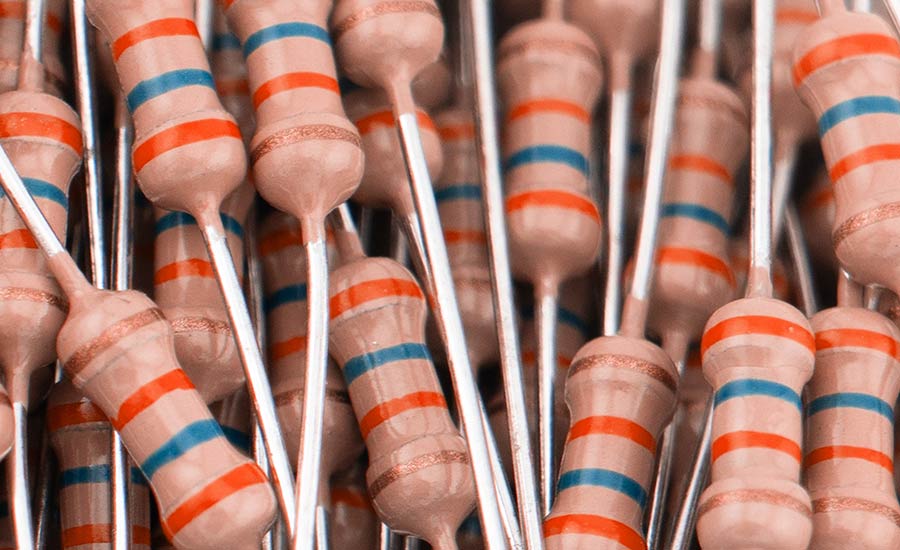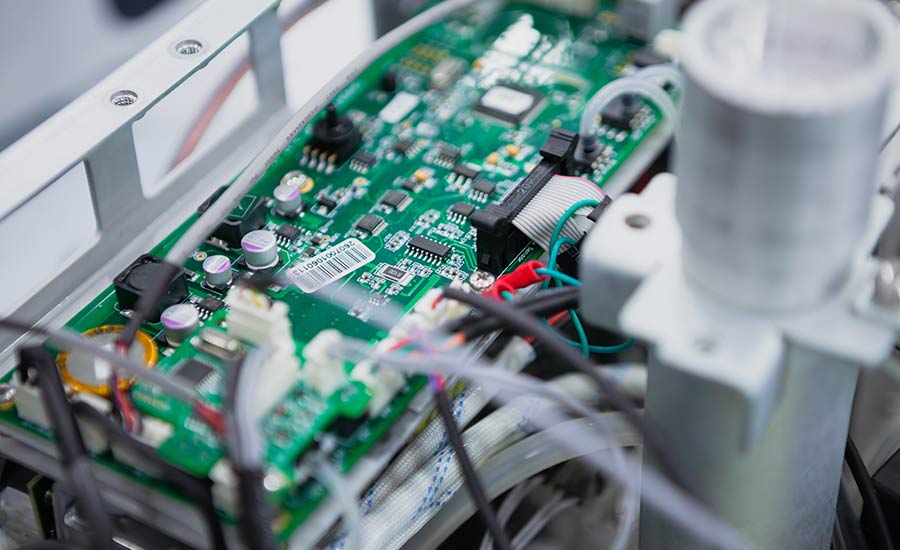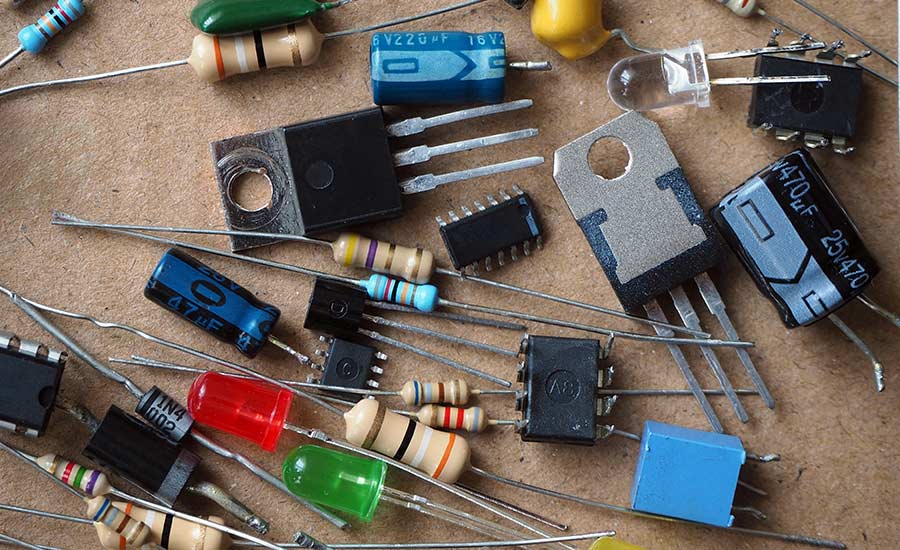
Resistors are fundamental components in electronics, crucial for managing and controlling the flow of electrical current in circuits.
Whether you’re an electronics enthusiast, a seasoned engineer, or just curious about how your gadgets work, understanding resistors is essential to grasp the basics of electronics.
In this guide, we’ll explore the various types of resistors, their applications, and how they influence the performance of your electronic projects.
Understanding the Basics: What Is a Resistor?
A resistor is an electronic component that limits or regulates the flow of electrical current in a circuit. Think of it as a traffic cop for electrons, ensuring that the current flows at a safe and controlled rate. Resistors come in various shapes, sizes, and materials, but they all serve the same fundamental purpose: to provide resistance.
Resistance is measured in ohms (Ω), and it determines how much a resistor opposes the flow of current. The higher the resistance, the more it restricts the current. Resistors are used in countless applications, from protecting sensitive components to adjusting signal levels.
Fixed Resistors: Types and Applications
Fixed resistors are the most common type of resistor, providing a constant resistance value that does not change with the electrical signal passing through them.
The different types of fixed resistors include:
Carbon Composition Resistors
Carbon composition resistors are one of the oldest types of resistors, made from a mixture of carbon powder and a binding material, which is then molded into a cylindrical shape and baked.
These resistors are known for their ability to handle high energy pulses, making them ideal for applications where high surge currents are expected.
In addition to their durability, carbon composition resistors are also relatively inexpensive. However, they have a higher noise level and less stability compared to other resistor types.
You’ll often find them in vintage electronics and in circuits where cost and pulse handling are more critical than precision.
Wire Wound Resistors
Wire-wound resistors are made by winding a metal wire, typically nichrome or similar alloys, around a ceramic, plastic, or fiberglass core. This design allows them to handle higher power levels and provide precise resistance values.
These resistors are commonly used in applications requiring high power dissipation and excellent accuracy, such as in power supplies, audio equipment, and industrial machinery. Their robust construction also makes them suitable for environments with significant temperature fluctuations.
Metal Film and Carbon Film Resistors
Metal film and carbon film resistors are created by depositing a thin layer of metal or carbon onto an insulating substrate. This method provides better performance characteristics compared to carbon composition resistors, including lower noise and improved stability.
Metal film resistors are favored for their precision and reliability, making them ideal for use in audio equipment, measuring instruments, and high-fidelity electronics. They offer tight tolerance and low temperature coefficient, ensuring consistent performance over a wide range of conditions.
They are often found in consumer electronics, automotive applications, and other areas where cost-effectiveness and reasonable performance are desired.
High-precision resistors are vital for ensuring the accuracy and reliability of measurement instruments, medical equipment, and aerospace systems

Variable Resistors: Types and Applications
Variable resistors, as the name suggests, allow for adjustable resistance within a circuit. They provide flexibility in controlling the flow of electrical current and are essential in applications where precise adjustments are necessary.
The different types of variable resistors include:
Potentiometers
Potentiometers, often referred to as “pots,” are three-terminal variable resistors with a rotating or sliding contact that forms an adjustable voltage divider. The most common type is the rotary potentiometer, which is used in a wide range of applications.
Potentiometers are used in:
- Volume controls: Found in audio equipment, potentiometers allow users to adjust the volume smoothly.
- Light dimmers: They control the brightness of lights by varying the resistance and thus the current flowing through the circuit.
- Position sensors: Used in joysticks and other input devices to detect the position of a control knob or lever.
Potentiometers are favored for their ease of use and reliability, making them a staple in both consumer electronics and industrial applications.
Rheostats
Rheostats are similar to potentiometers but are designed specifically for adjusting current flow. They are two-terminal devices, with one fixed contact and one movable contact. Unlike potentiometers, which act as voltage dividers, rheostats are used to vary resistance in series with a load.
Rheostats are used in:
- Motor speed control: Rheostats adjust the current to control the speed of motors in applications like electric fans and industrial machinery.
- Heater controls: They regulate the power delivered to heating elements in devices such as toasters and space heaters.
- Scientific instruments: Used in laboratories to fine-tune the current in experimental setups.
Trimmers
Trimmers, also known as trim pots or preset resistors, are miniature potentiometers designed for infrequent adjustment. They are typically used for calibration and fine-tuning of circuits during manufacturing or maintenance.
Trimmers are used in:
- Calibration: Trimmers are used in measuring instruments and sensors to achieve precise readings.
- Tuning circuits: Found in RF circuits and oscillators, trimmers adjust frequency and other parameters.
- Offset adjustment: They help eliminate offset errors in operational amplifiers and other analog components.
Non-Linear Resistors: Functionality and Uses
Non-linear resistors exhibit a resistance that changes in response to different external conditions, such as temperature, voltage, or light intensity.
The different types of non-linear resistors include:
Thermistors
Thermistors are temperature-sensitive resistors whose resistance changes significantly with temperature.
There are two main types: Negative Temperature Coefficient (NTC) thermistors, where resistance decreases as temperature increases, and Positive Temperature Coefficient (PTC) thermistors, where resistance increases with temperature.
Thermistors are used in:
- Temperature sensing: NTC thermistors are widely used in digital thermometers and temperature sensors in HVAC systems.
- Overcurrent protection: PTC thermistors protect circuits from overcurrent conditions by increasing resistance when excess current flows.
- Temperature compensation: They stabilize temperature-sensitive circuits by compensating for variations in temperature.
Varistors
Varistors, or Voltage Dependent Resistors (VDRs), change their resistance with the applied voltage. They are designed to protect circuits from voltage spikes and surges by clamping excessive voltage.
Varistors are used in:
- Surge protection: Varistors are commonly used in power strips, surge protectors, and electronic devices to guard against transient voltage spikes.
- Lightning protection: They protect telecommunications and power systems from lightning-induced surges.
- Voltage regulation: Varistors help in maintaining stable voltage levels in sensitive electronic circuits.
Photoresistors (LDRs)
Photoresistors, also known as Light Dependent Resistors (LDRs), change their resistance based on the intensity of light falling on them. Their resistance decreases as light intensity increases.
Photoresistors are used in:
- Light sensing: LDRs are used in light-sensitive circuits, such as automatic streetlights, night lights, and outdoor lighting systems that turn on or off based on ambient light levels.
- Camera exposure control: They help in adjusting the exposure in cameras and other imaging devices.
- Alarm systems: LDRs are utilized in security systems to detect changes in light levels, triggering alarms when light levels deviate from expected values.
Specialized Resistors and Their Applications
In addition to the commonly used fixed and variable resistors, there are specialized resistors designed for specific purposes and applications.
The different types of specialized resistors include:
Surface Mount Technology (SMD) Resistors
Surface Mount Technology (SMD) resistors are designed to be mounted directly onto the surface of printed circuit boards (PCBs) without the need for through-hole connections. These resistors are much smaller than traditional leaded resistors, making them ideal for compact and high-density circuit designs.
SMD resistors are used in:
- Consumer electronics: SMD resistors are extensively used in smartphones, laptops, and other compact electronic devices where space is at a premium.
- Automotive electronics: They are utilized in the automotive industry for their reliability and ability to withstand harsh conditions.
- Medical devices: SMD resistors enable the miniaturization of medical devices, improving portability and functionality.
SMD resistors are critical in modern electronics manufacturing, allowing for the creation of smaller, lighter, and more efficient electronic products.
Fusible Resistors
Fusible resistors combine the functions of a resistor and a fuse, providing both current limiting and overcurrent protection. When the current exceeds a certain threshold, the fusible resistor heats up and opens the circuit, similar to a fuse.
Fusible resistors are used in:
- Power supplies: Fusible resistors protect power supplies from overcurrent conditions, preventing damage to components and circuits.
- Audio equipment: They safeguard audio amplifiers and speakers by limiting excessive current flow.
- Household appliances: Fusible resistors are used in various household appliances to enhance safety by providing overcurrent protection.
Fusible resistors offer a reliable and cost-effective solution for protecting electronic circuits from overcurrent damage, combining two functions into a single component.
High-Precision Resistors for Specific Applications
High-precision resistors are designed to offer extremely accurate resistance values with tight tolerances and low temperature coefficients. These resistors are essential in applications where precision and stability are critical.
High-precision resistors are used in:
- Measurement instruments: High-precision resistors are used in multimeters, oscilloscopes, and other measuring devices to provide accurate readings.
- Medical equipment: They are crucial in medical devices such as diagnostic equipment and patient monitoring systems, where precision is vital.
- Aerospace and defense: High-precision resistors are employed in aerospace and defense applications for their reliability and accuracy under extreme conditions.
High-precision resistors provide the consistency and accuracy required for demanding applications, ensuring reliable performance in critical systems.

AGS Devices: A Trusted Distributor of Resistors
AGS Devices specializes in the distribution of high-quality resistors, ensuring each product meets stringent standards. Our comprehensive quality control system provides authenticity and high-performance standards are required in various applications.
We also distribute electronic components such as:
- Power Supply Distributors
- Semiconductors for Sale
- Optoelectronics
- Circuit Protection
- Interconnects
- Passive Components Electronics
- Electronic Testing Equipment
- Electromechanical Devices
We are dedicated to supplying resistors that are reliable and durable. The team at AGS understands the critical role resistors play in electronic circuits, and we have many procedures in place to make sure that every component we distribute contributes to the optimal functioning of your projects.
As a leading distributor of resistors, our goal is to boost the efficiency and reliability of your supply chain.
FAQs About Different Types of Resistors
If we haven’t answered all of your questions, here are some frequently asked questions about resistors:
What does a resistor do?
A resistor limits or regulates the flow of electrical current in a circuit. By providing resistance, it helps control the amount of current that passes through, protecting sensitive components from excessive current and enabling the proper functioning of electronic devices.
How does a resistor work?
A resistor works by converting electrical energy into heat as it opposes the flow of current. When a voltage is applied across the resistor, the electrons encounter resistance, which slows them down and dissipates energy in the form of heat. The amount of resistance is measured in ohms (Ω) and determines how much the resistor restricts the current.
What are the applications of resistors in electronic circuits?
Resistors have a wide range of applications in electronic circuits, including:
- Current limiting: Protecting components from excessive current.
- Voltage division: Creating specific voltage levels within a circuit.
- Biasing transistors: Ensuring proper operation of transistors by setting the correct current and voltage levels.
- Signal conditioning: Adjusting signal levels to desired values.
Pull-up and pull-down resistors: Setting default logic levels in digital circuits.
Resistors are indispensable in almost every electronic device, from simple gadgets to complex machinery.
